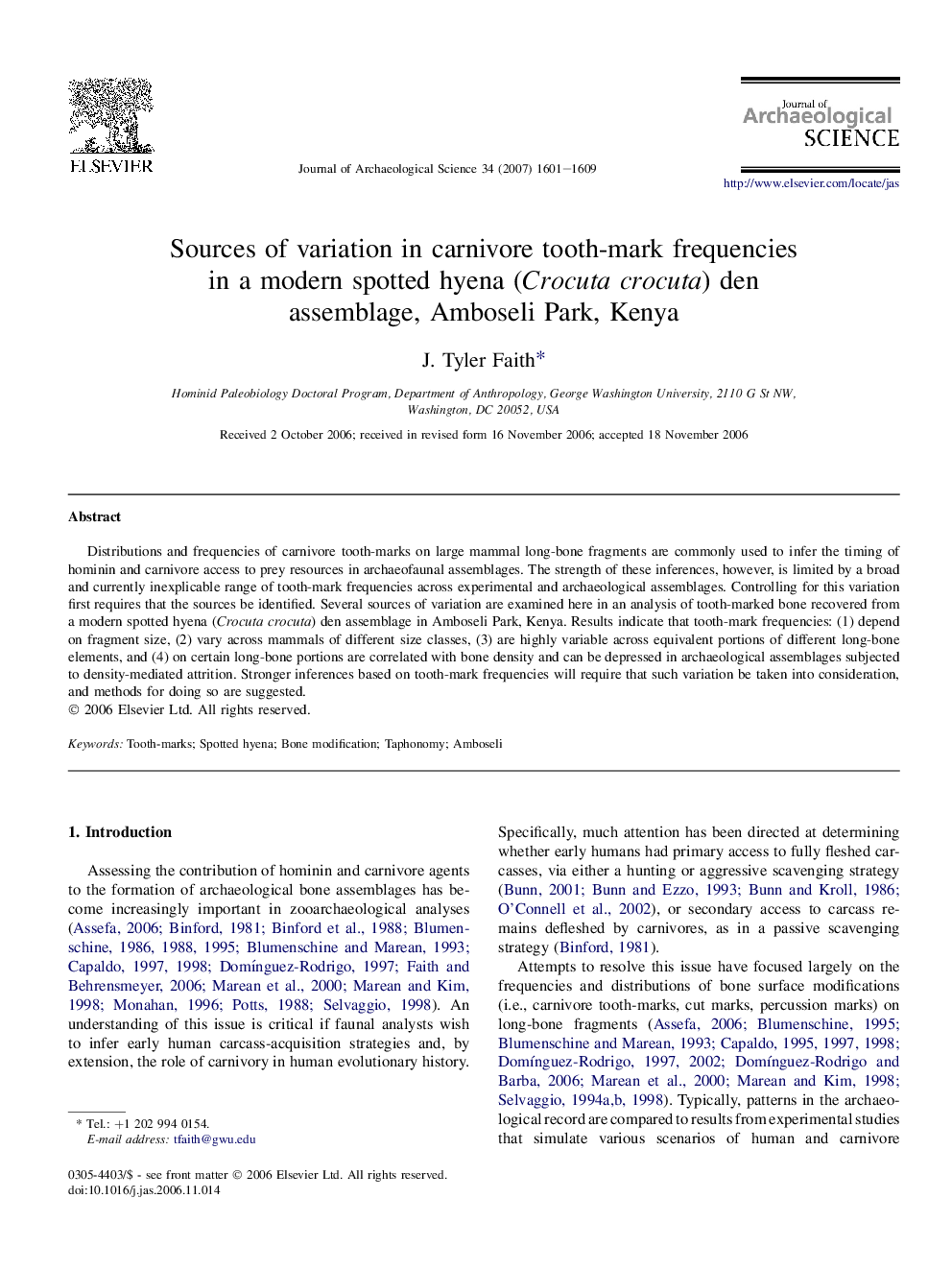| Article ID | Journal | Published Year | Pages | File Type |
|---|---|---|---|---|
| 1036359 | Journal of Archaeological Science | 2007 | 9 Pages |
Distributions and frequencies of carnivore tooth-marks on large mammal long-bone fragments are commonly used to infer the timing of hominin and carnivore access to prey resources in archaeofaunal assemblages. The strength of these inferences, however, is limited by a broad and currently inexplicable range of tooth-mark frequencies across experimental and archaeological assemblages. Controlling for this variation first requires that the sources be identified. Several sources of variation are examined here in an analysis of tooth-marked bone recovered from a modern spotted hyena (Crocuta crocuta) den assemblage in Amboseli Park, Kenya. Results indicate that tooth-mark frequencies: (1) depend on fragment size, (2) vary across mammals of different size classes, (3) are highly variable across equivalent portions of different long-bone elements, and (4) on certain long-bone portions are correlated with bone density and can be depressed in archaeological assemblages subjected to density-mediated attrition. Stronger inferences based on tooth-mark frequencies will require that such variation be taken into consideration, and methods for doing so are suggested.
